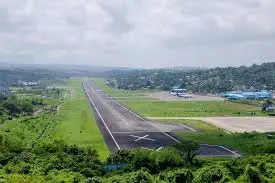Airspace over Andaman sea partly closed on May 23-24; can be for likely missile or weapons system test

Partial Airspace Closure Over Andaman Sea: Signals of Strategic Missile or Weapons Testing?
Authorities announced a partial closure of the airspace over the Andaman Sea for May 23 and 24. While they provided few details, experts believe the restriction likely supports a missile or weapons system test. Defense agencies often take such precautions to improve readiness and validate new military technologies.
Strategic Importance of the Andaman Sea
The Andaman Sea lies between the eastern coast of India and the western shores of Thailand and Myanmar. It acts as a key route for global maritime traffic and lies near the Strait of Malacca — one of the busiest shipping lanes worldwide. Because of this, militaries prefer the area for weapons testing and exercises. They choose this location because it offers open waters and minimal interference with populated regions.
Any restriction on airspace here is deliberate. Closing parts of the sky signals a planned live-fire missile test or weapons trial. Such tests require secure areas to protect civilian traffic and ensure accuracy.
Why Partial Airspace Closure?
Military tests involving missiles or weaponry pose risks to civilian aircraft. Authorities close airspace partially to clear the skies during these high-risk activities. The closure over the Andaman Sea appears carefully timed and coordinated. It likely covers a missile launch or weapons firing requiring a safety zone. This lets the military test without severely disrupting commercial flights.
Rising Maritime Defense Focus
Countries in the Indo-Pacific region increasingly prioritize maritime defense. Territorial disputes, growing naval presences, and protecting trade routes drive this trend. These routes pass through critical chokepoints like the Strait of Malacca and South China Sea.
Testing weapons over the Andaman Sea fits this trend. Advanced missiles and naval guns need real-world trials to verify performance. Testing over open water simulates combat better than land ranges or simulations.
Possible Weapons Being Tested
Though officials have not confirmed details, missile systems are strong candidates. Tests might involve surface-to-air or anti-ship missiles, or ballistic interceptors. Other weapons, such as electronic warfare tools or guided munitions, could also be involved. These tests check system reliability and improve operator training and integration.
Regional and Global Effects
This airspace closure and likely weapons testing draw regional attention. Nearby countries monitor such activities closely due to the area’s strategic value. The test may demonstrate military strength and send a signal of readiness. Transparent communication can help ease tensions by clarifying that the test is routine and defensive.
Aviation and Public Safety
Advance notice helps airlines adjust routes to avoid restricted zones. Authorities issue Notices to Airmen (NOTAMs) listing affected coordinates and times. Pilots and airlines use these to ensure safe navigation during the test period.
Looking Forward
As May 23-24 approach, all eyes turn to the Andaman Sea. Confirmation about the closure’s purpose will reveal if a missile launch or weapons trial takes place. Such events highlight the region’s importance in defense readiness and geopolitical strategy.
Though these tests are routine for many militaries, their timing and location often reflect larger strategic plans. The Indo-Pacific remains a key focus for defense development and global interest.






